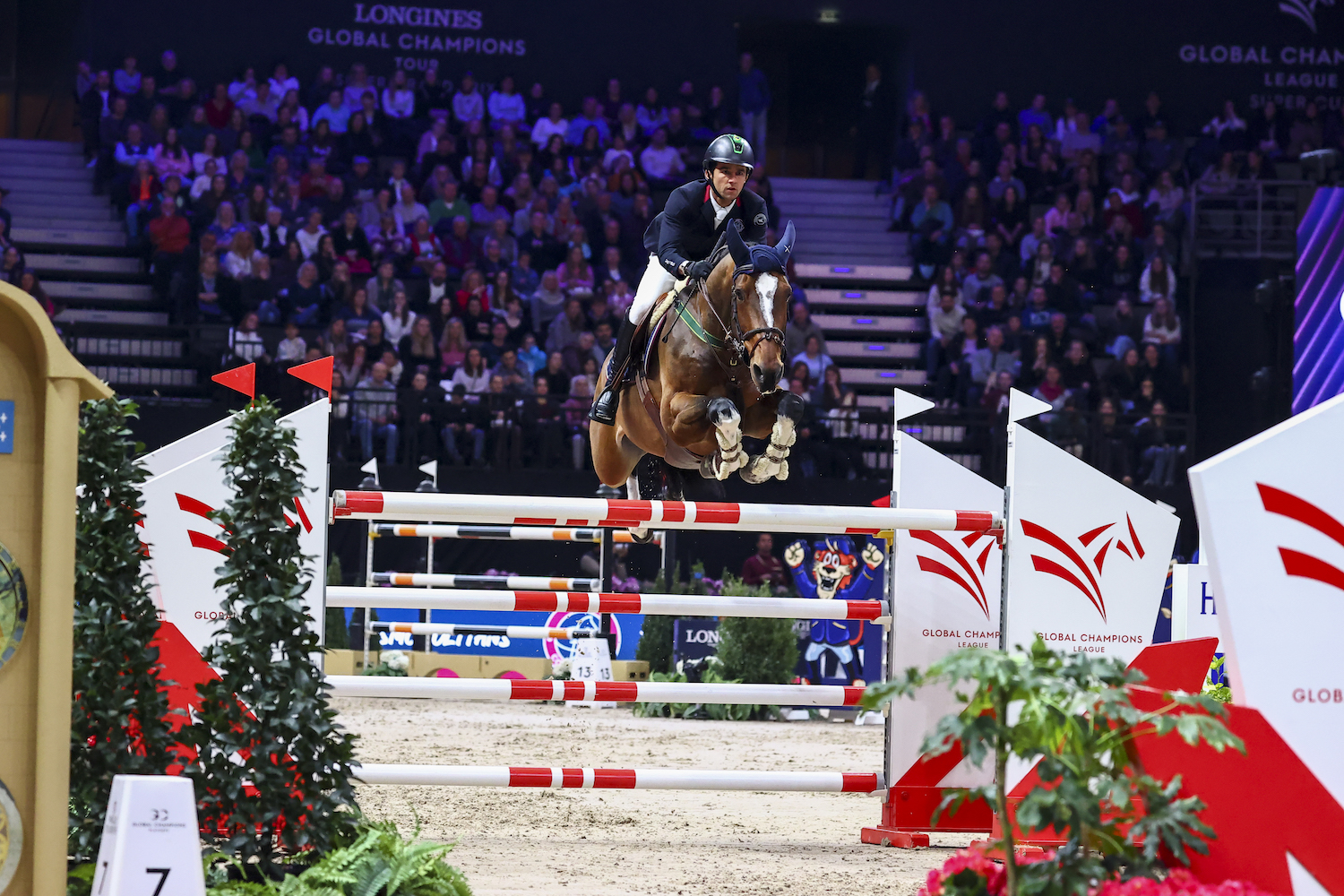My new three-year-old Dutch Warmblood True cross-ties well in the barn and likes to be groomed.
But even after a few weeks, he’s still nervous about his position. Which, I must admit, is not ideal.
Instead of being located in a bay where the horse faces the aisle, these ties are located in the aisle at one end of the barn. Most of the action happens behind True or on his right side, where the door to a busy tack room is located. If you’re lucky enough to be designing a barn, locate cross-ties so that horses face outward with a solid wall behind them.
For several weeks, I only place True in this position when we are alone in quiet surroundings. Once he’s comfortable with that, I begin to use the location with one or two other people around. I remind barn friends to speak to True as they approach slowly, watch for him to turn his eye toward them, and remain within his side view. Horses can’t see anything directly behind their tails, or for a short angle off either side of their hips. And many riders don’t realize the degree of danger in surprising a horse from behind.
My dad raised me on the saying that “every dog bites, every gun shoots, and every horse kicks.” Every healthy horse can kick the full length of his straightened leg from croup to hoof. That’s usually about seven feet outward. He can hit any object from ground level to roughly seven feet high when standing still. A moving horse can tilt forward to raise his hind legs even further. And one kick can carry enough force to kill.
I’m often surprised at three facts about kicking.
First, that most people, even most good riders, aren’t as careful as they should be walking up behind a horse or leading horses past each other.
Second, that many people believe only some horses might kick. While it is true that young, inexperienced, or frightened horses are most likely to let loose with both hind legs, even the quietest school horse will kick under the right circumstances. Those of us who have been kicked, or seen others injured or killed by a kick, will agree that it pays to be careful.
And third, I’m surprised so many people assume that horses who kick do so as a planned strategy and are therefore “bad.” It’s important to consider the horse’s brain in terms of his “intent” to kick. No equine brain contains the prefrontal cortex to evaluate a kick in advance or consider its effect, nor can the horse feel guilty or sorry for such action.
Kicking is a natural defense and a means of communication that every horse uses. Human brains have plenty of prefrontal cortex for planning and evaluating action: it’s up to us to keep ourselves and our horses safe.
Related reading:
Brain-Based Horsemanship is a weekly column that chronicles Janet Jones, PhD, and her journey with True, a Dutch Warmblood she trained from age three using neuroscience best practices. Read more about brain-based training in Jones’ award winning book Horse Brain, Human Brain.



 March 16, 2023
March 16, 2023 
























